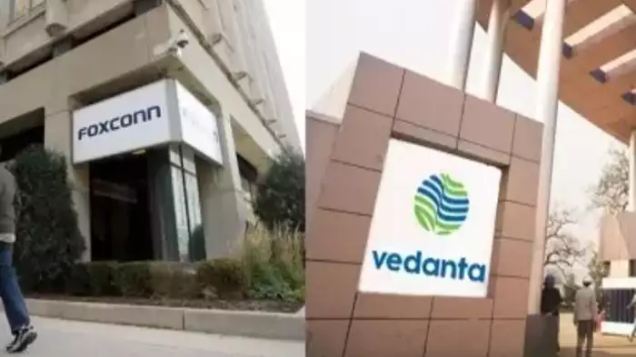It would not be an exaggeration to compare the desperation for oil in 1970s to the desperation for semiconductor these days. Each country is eyeing to ace the domain of semiconductor fabrication. And its not happening out of the blues. Since years, various capable nations have been striving for fabrication dominance; however, post-Covid era has made the struggle more profound. Simply because of the triggered demand for electronic goods and disrupted global supply chains. After the pandemic, countries realized the market vulnerability and decided to establish a robust fabrication ecosystem in their own country and India was no exception to them.
In fact, India being a large and young work force is one of the most suitable contenders for being the semicon hub. Additionally, the current government is steering India on the right path. But still, it seems that India has a long way to go for being one of the biggest semicon fabricating countries.
The biggest partnership for the establishment of FAB plant in India between the Taiwan based Foxconn and the Indian conglomerate Vedanta has collapsed. Apparently, both the companies lacked the Fab tech for which they tried to source another partner, possibly from the Europe, failing which the JV fell through.
However, both companies have made it clear that they will work separately in India. Foxconn has also clarified that it is not going to leave India rather would diversify its partners. But it is not a hidden fact that the Indian aspiration of semicon fabrication has received a huge setback. As a result, different types of reactions are coming from the people across India. In one such reaction, a twitter user named “STAR Boy” wrote a thread on semiconductor story of India since 1960s.
He tweeted,” India missed the semiconductor bus in 1987 due to an incompetent govt. and today India is behind 12 generations in Global Semiconductor race.” Through his entire thread, he explains the events regarding the semiconductor-centric developments over the decades. So, let us trace the course of this history.
Tracing The Course Of History of Semiconductore In India
In 1958, eight individuals, also known as “traitorous eight” started Fairchild Semiconductor. This was the time when Integrated Circuits (IC) were newly invented. Fairchild Semiconductor was looking to establish its first semiconductor plant giving preference to India. However, the heavy regulations, lethargic bureaucracy and a focus on production of low-end products became barriers and eventually the plant was installed in Malaysia. Later in 1962, India established Bharat Electronic Limited to manufacture electronic components in India including semiconductor. BEL started to manufacture silicon and germanium transistor. But unfortunately, this unit shut down because BEL failed to compete with the global standard.
In mid-1980s, BEL in partnership with IISc professor A.R. Vasudeva Murthy established Metkem Silicon Limited. But lack of govt. support and its failed promise of subsidy again shed waters on the larger aspirations. In 1990s another high spirited man, E.S Ramamurthy tried to develop silicon with BHEL but witnessed same fate.
In 1964, Indian government established Electronic Commission in a bid to develop India’s electronic market as well as production. After that in late 1970s, the government of India initiated the Technology Policy Statement to promote the indigenous technology like semiconductors.
Biggest Hit To The Indian Semiconductor Dream
It was finally in 1983, when the government of India established the Semiconductor Complex Ltd. (SCL) in Mohali, Punjab to produce high quality semiconductor products for Indian market. Establishment of SCL was a significant step as it also focused on manufacturing microprocessors. Till late 1980s, SCL made a remarkable progress from 5-micron process technology to 0.8-micron process. But like any other industry it also faced the wrath of US-Japan trade war of 1980s, a similar hostility like today’s US-China.
After a year or so, the market started to get back to the tracks. However, 1989 brought the biggest setback for Indian semicon dream which threw India decades back. In 1989, a massive fire broke out in the SCL and whole setup got burnt. Interestingly, at this point of time, Indian semiconductor technology was near to the best and current players like China and Taiwan would not even have thought of manufacturing one.
To cope up with the loss, government established Centre for Electronics Design and Technology in Mohali in 1990. This was the most tragic incident with the massive ramifications. By the early 2000s, semiconductors were a $200 billion industry and India has a negligible share in it. The design and architecture was based in US while the manufacturing consolidated in the Eastern Asia.
The Predicament of 2005
In mid-2005, an MNC started its operation in Southern India and established a “class 100 clean room” for checking the impurities in the semiconductors. But again the policies and regulation proved to be the biggest roadblocks. The imported machinery remained stuck on the port for months. To the worse, forget about the concessions, heavy import duty was charged on the equipments. After having unyielding discussions with the government, the company decided to move outside India and to the surprise, the opportunity was grabbed by China with both hands. Seeing this horrific situation, another MNC gave up its plan to invest in India.
In 2006, India declared its first semiconductor policy under the Manmohan Singh government and invited investment in 2011. But the past events deterred the MNCs tro invest heavily. The situation changed after 2014 and especially after the pandemic as stated above. Now, many big fishes in the pond are trying to invest in India.
India has already developed an assembly ecosystem and with foreign investment and technology transfer it is looking to expand to the fabrication.

